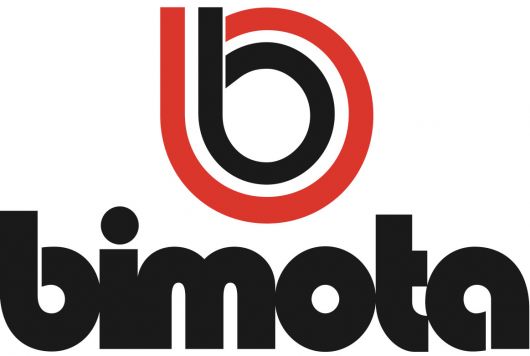End in Stern
In August 2023, it’s time for another trip to the Alps—this time, the Dolomites are the destination. With the experience of my last tour on my travel Bimota, I’m once again setting off with the DB3 as a backup bike. The starting point of the tour is Lindenberg in the Allgäu, where I can leave my car, trailer, and DB3 at a friend’s place.
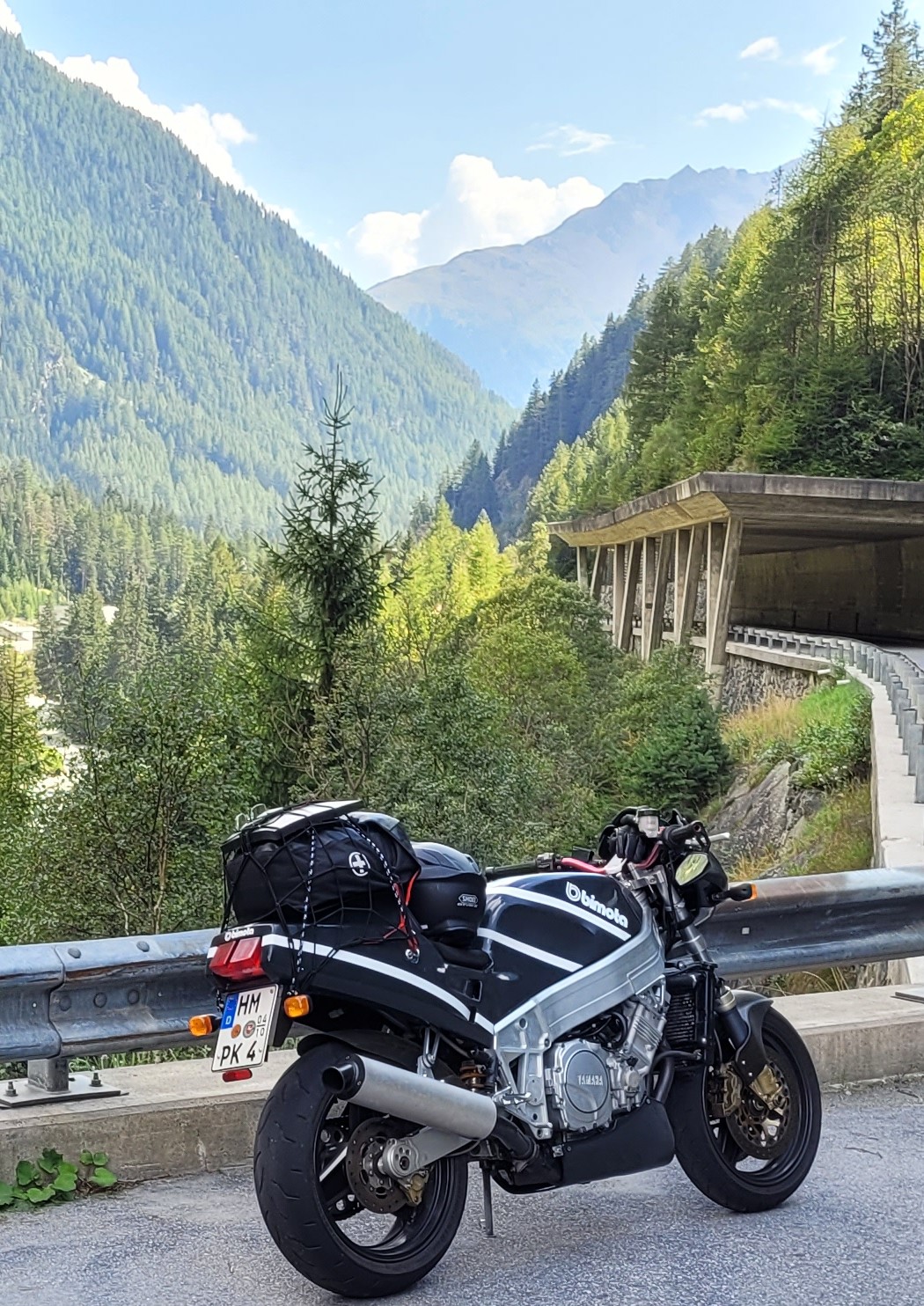
On the first day, the tour plan already includes two real highlights. Under a bright blue sky, the route first leads through the Argen Gorge and up to the first small pass, the 1,514-meter-high Faschinajoch, which offers stunning landscapes, many curves, and even some hairpin bends, especially on the southern side.
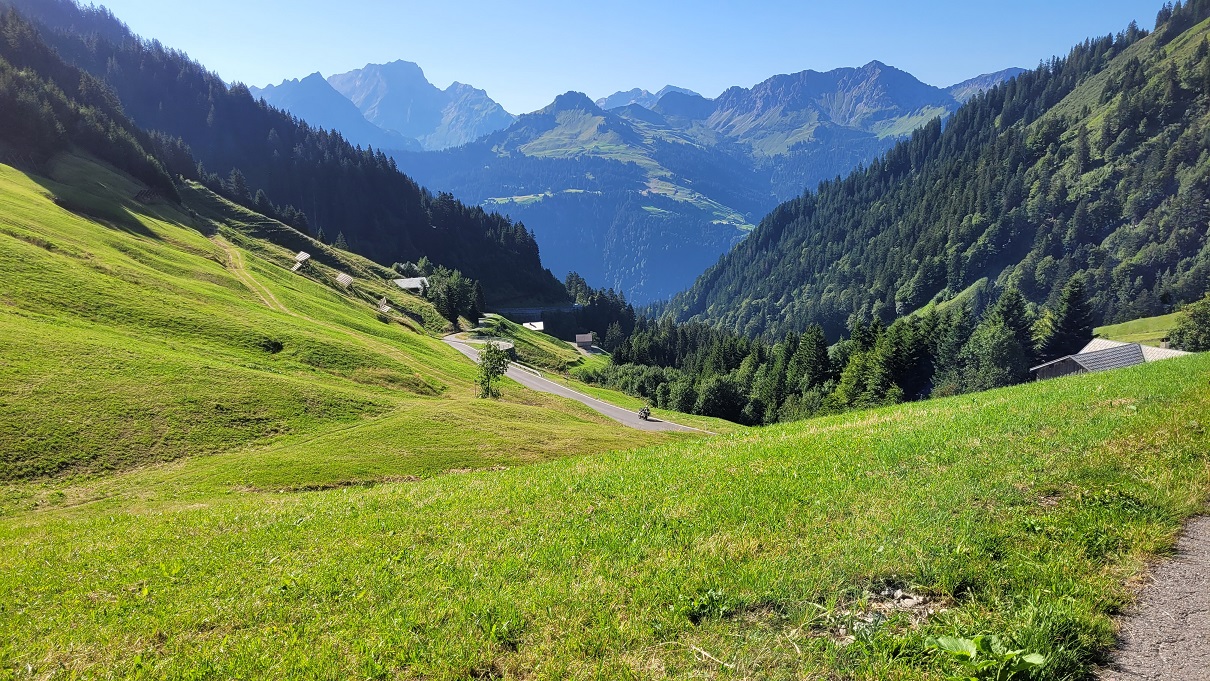
The southern ramp descends to Bludenz. A few kilometers past the town, the Montafoner road leads south to the toll station of the Silvretta High Alpine Road. The fee for using the panoramic road by motorcycle is €16, which comes with a small sticker as a souvenir and the joy of navigating 34 hairpin bends over roughly 22 kilometers. The first 25 hairpins lead up to the Bielerhöhe at 2,032 meters.
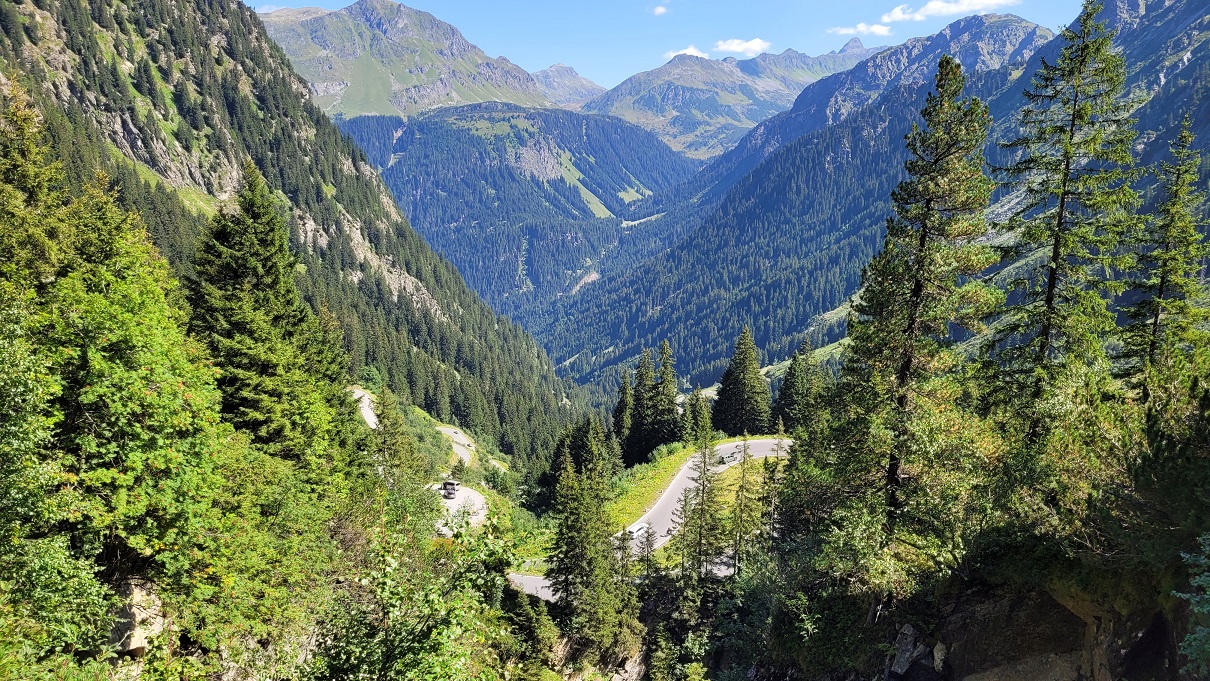
After the reservoir, the pass descends on the eastern side through Ischgl down to Galtür. Instead of taking the main road to Landeck through the Sanna Valley, we opt for a mountain route, turning right just before the Trisanna Bridge and heading down through Tobadill and Perfuchsberg to Landeck on the Inn River. From there, the route follows the Inn Valley for a short stretch before crossing the Piller Saddle, offering beautiful views of the Inn Valley, and continuing towards the Ötztal.
In Sölden, the famous 68-kilometer-long Timmelsjoch High Alpine Road begins. The toll station is located just before the summit and is housed within the highly recommended TOP Mountain Motorcycle Museum Crosspoint. The fee for a one-way motorcycle ride over the pass is €17.
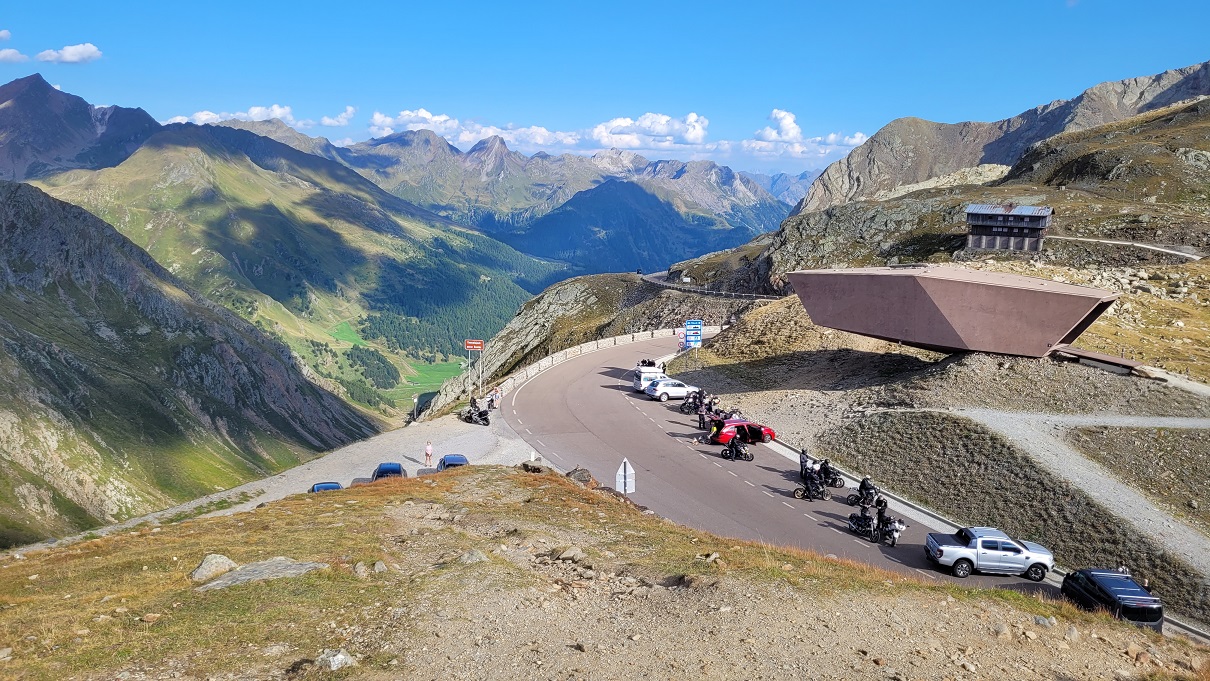
From the toll station, it’s another seven kilometers to the summit at 2,509 meters. The view down into the valley is breathtaking. The steep slopes make it clear that the remaining 22 kilometers of the high alpine road, from the summit down to the destination in Moos, will be packed with hairpins and curves.
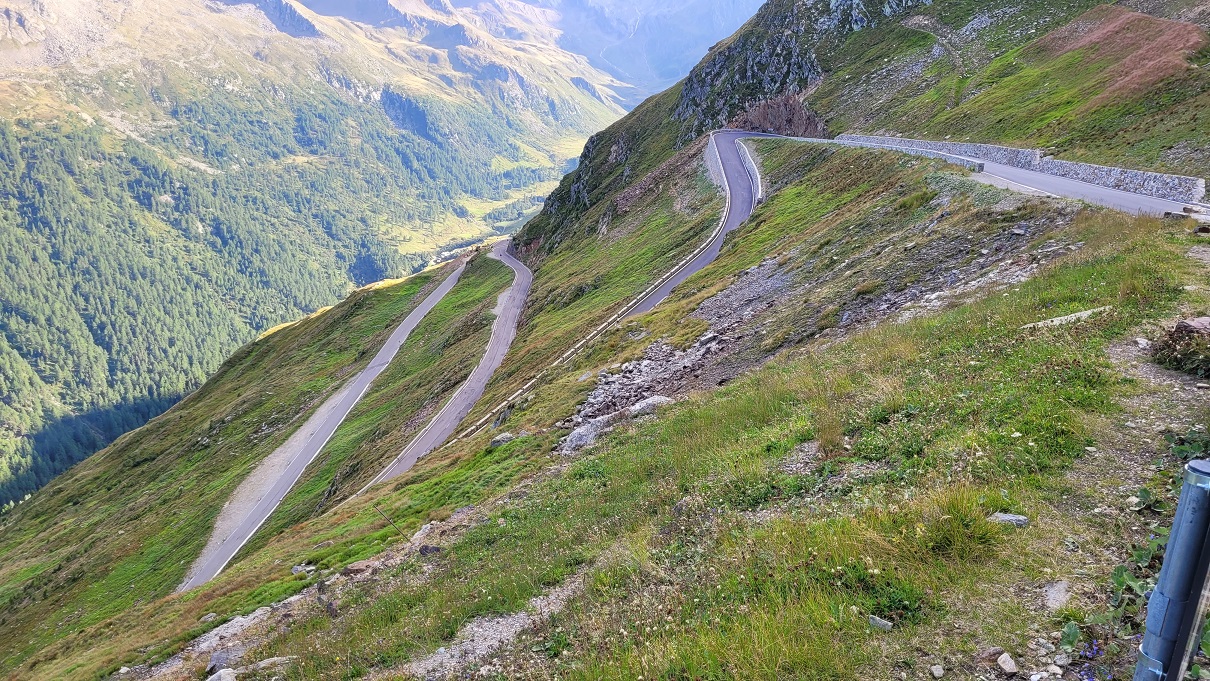
For the second day, the plan is to reach Wolkenstein in Val Gardena, including the Sella Round. From San Leonardo, the Jaufen Pass (2,041 meters) leads to Sterzing. Upon entering the town, just before crossing the Brenner Autobahn, the route heads south through the Sarntal Alps and over the Penser Joch (2,211 meters) toward Bozen. North of Bozen, we head west over the Ritten to Waldbrück and further to Klausen, where the Würzjoch begins – a 50-kilometer pass leading to St. Martin in Gadertal.
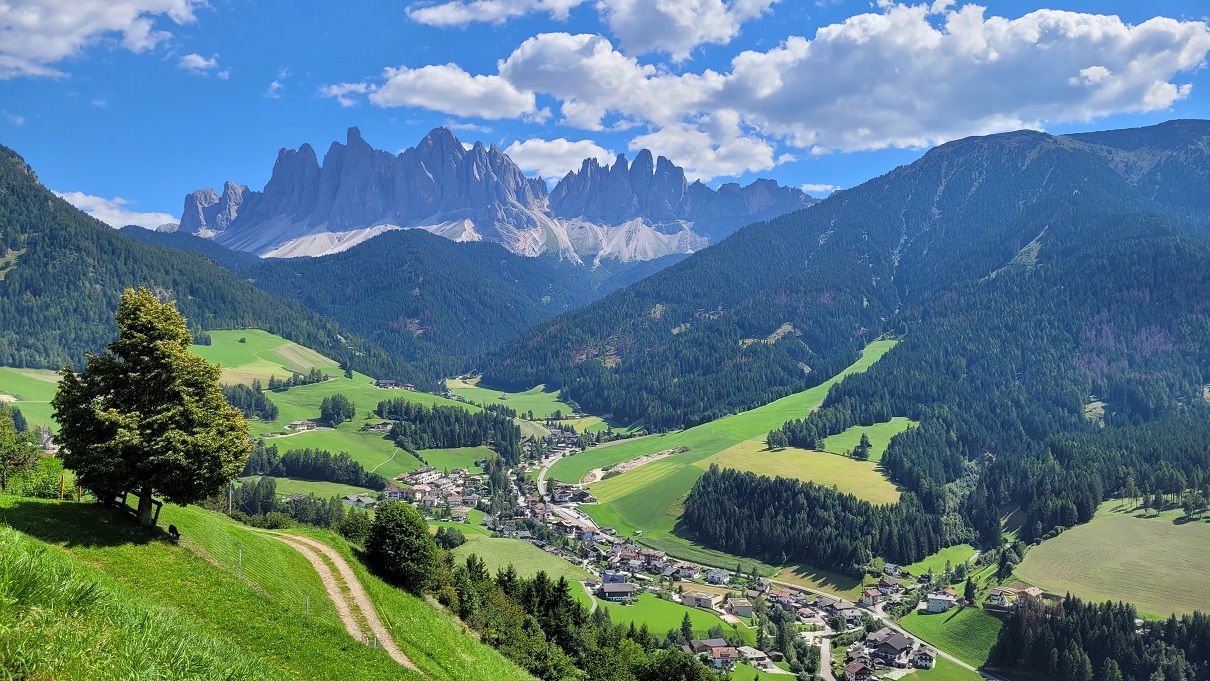
To my surprise, just a few kilometers above St. Martin, I have to switch to reserve. That’s way too early—after barely 200 kilometers since the last refuel, even with spirited riding through the mountains. Otherwise, the YB8 is running perfectly, so I’m not too worried as I turn onto the SS244 southbound towards Passo di Campolongo. One kilometer later, there’s a gas station—a great opportunity to fill up before the Sellaronda.
I stop at a pump and immediately notice a strong smell of fuel. At that moment, another motorcyclist pulls up next to me and points out that my bike is leaking a massive amount of fuel—I should move away from the gas station immediately.
Quick action is needed since fuel leakage near a hot engine can end badly very fast. I roll the Bimota away from the pumps and shut off the fuel tap. A large puddle has already formed under the bike, but at least nothing is leaking anymore. Lucky again—just like on Col du Glandon in June, when I had a similar experience due to a deteriorated fuel hose.
Oh man, nobody needs this – especially not when the thermometer at the gas station reads 37°C. Next to the station, there’s a car wash with an empty garage bay, so I push the bike inside to work in the shade.
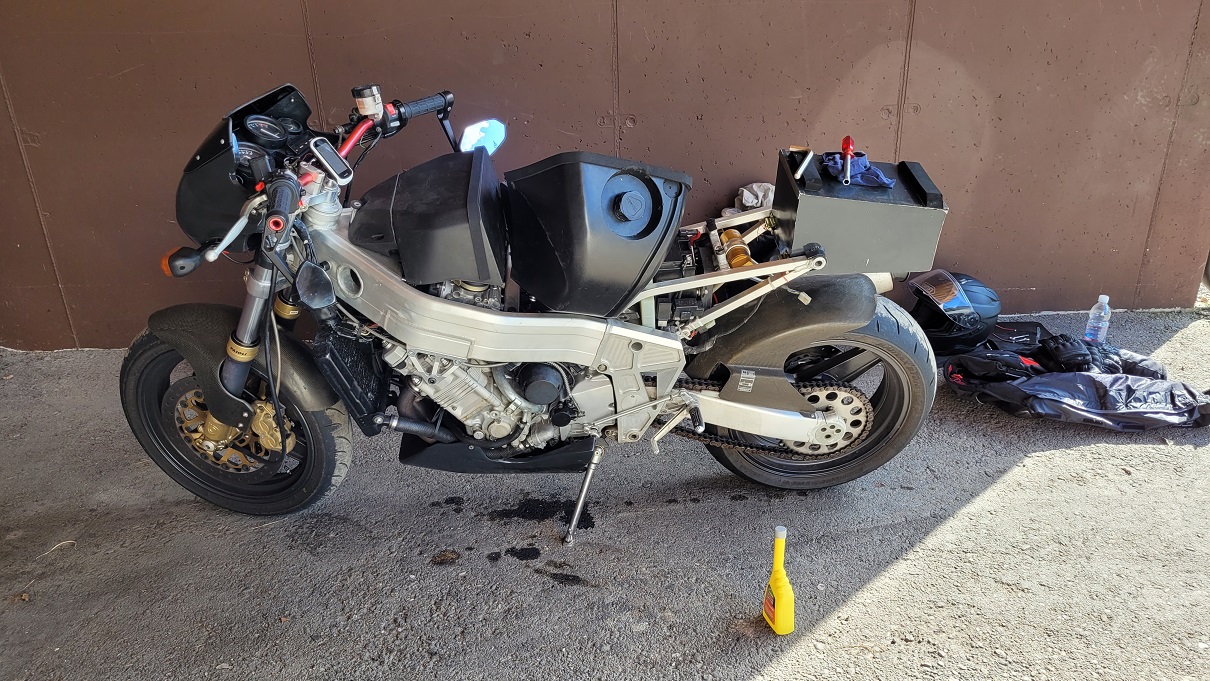
In just a few steps, I unload the luggage, which also contains the tools for the monocoque. It’s secured with just three screws, and the fuel tank itself is only held by tension straps on the frame. Since it’s nearly empty, it’s easy to remove. But what do I find? All fuel lines, filters, reserve switch, fuel pump, and the fuel tap are dry and tight! I had completely replaced them after my last tour. Unfortunately, this discovery doesn’t make fixing the issue any easier.
I reinstall the tank, turn on the ignition, and the fuel pump starts running—along with a steady stream of fuel from the carburetor overflow. Most likely, a stuck float needle valve. I try the usual trick—tapping the float bowls to free the needle—but no luck. Before I risk damaging the float chambers, I stop.
The carbs need to come off. However, on Bimota YB8 models, a cross brace runs behind the carburetor bank, meaning special tools are required for removal—not happening here and now. Maybe fuel system cleaner and high-octane fuel will help. Tamoil has both.
I push my dismantled Bimota to the pump, to the amazement of other customers, and fill up a few liters. For 9 euros, I buy a fuel system cleaner. Hopefully, it will free the stuck valve. But if I just start the engine now, the fuel will spill out again. Solution: redirect the overflow back into the tank.
I ask the gas station attendant for a cap from a large container, and we find one that fits the YB8 tank. Using a Phillips screwdriver, a nail scissors, and a file from my toiletry bag, I make a hole in the cap. I attach a hose to the carburetor overflow, reassemble the tank and monocoque, and route the hose back into the makeshift tank cap.
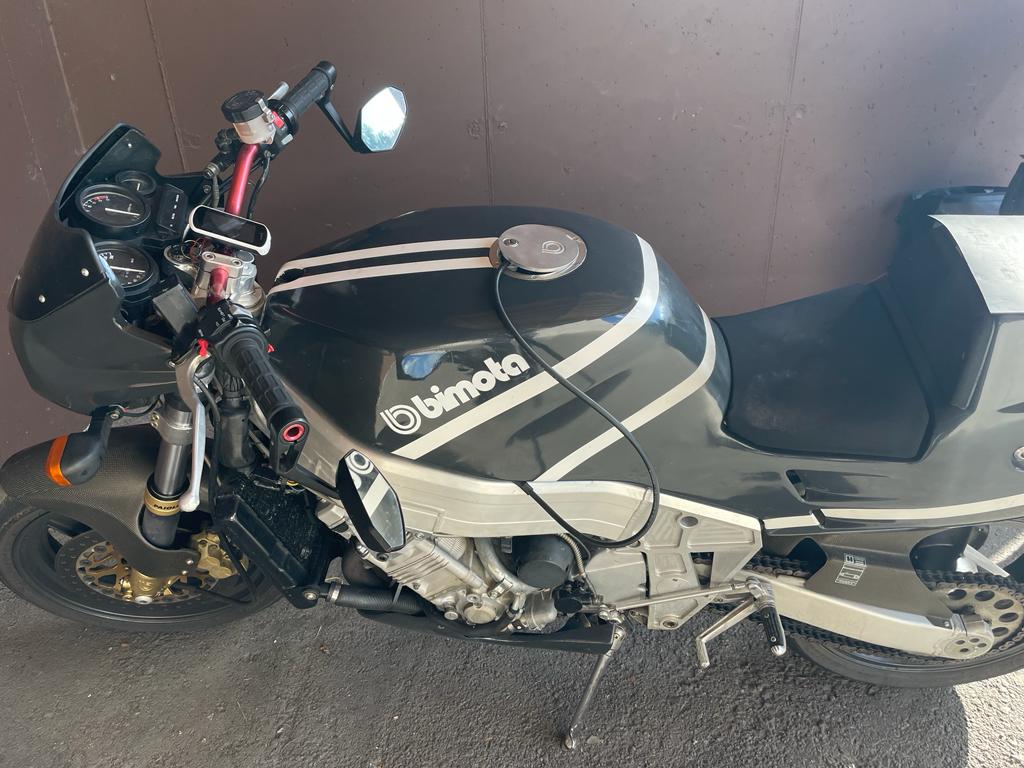
Ignition on, fuel pump running, and… the starter barely turns before stopping abruptly. The fuel has likely flooded the combustion chamber. I push the bike backward in third gear to clear it. The next attempt works. The engine fires up—only running on three cylinders—but the fuel overflow is now being returned to the tank. Above 5,000 RPM, no more fuel comes out. Good enough to reach my hotel in Wolkenstein, though not via the planned Sellaronda.
On the highway south, the fourth cylinder eventually returns. Likely, the needle valve has cleared, or at least the spark plug dried out. The engine runs fine again. So well that I even stop for a photo at Kreuzkofel and decide to keep revs low in the next village.
But my courtesy towards pedestrians turns out to be a bad idea. On the three kilometers from Abtei to Stern, I lose another cylinder, then another. In Stern, the engine finally floods and dies completely.
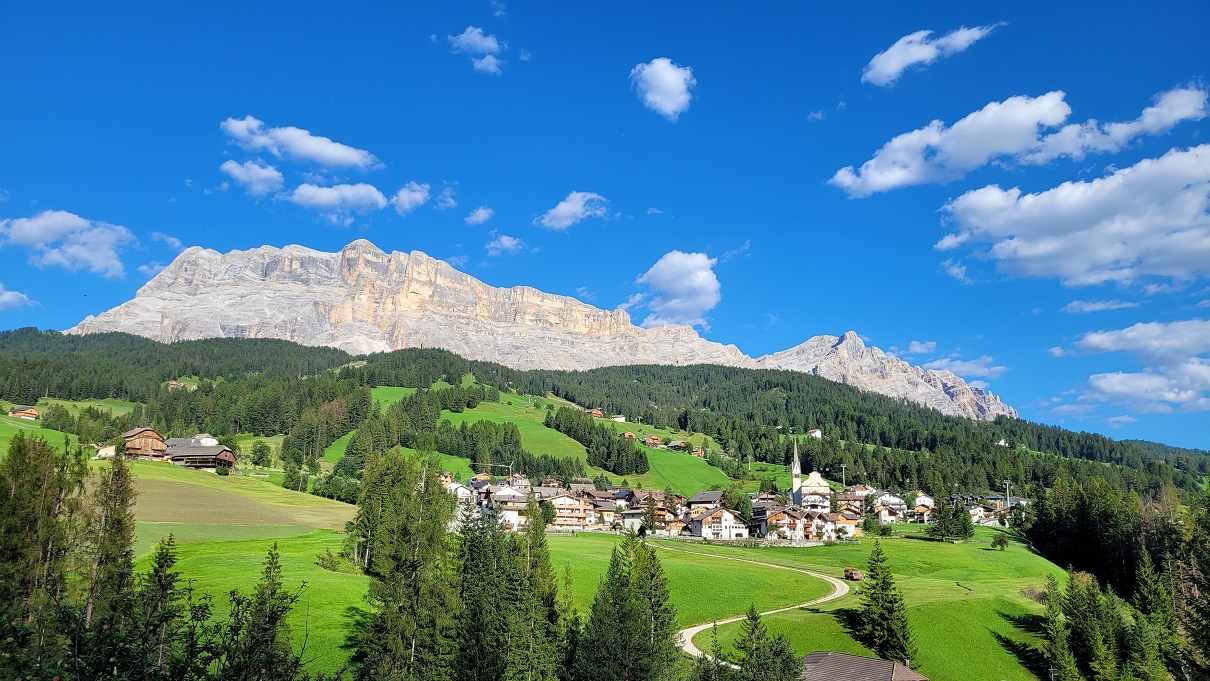
I roll into a side street and park next to a café. The bike will have to stay here for a while. Do I have roadside assistance for motorcycles, or do I need to pick it up myself? Either way, I go inside and explain my situation. The owner kindly offers a spot in his underground garage. One problem solved.
Now, I just need to somehow get over the pass to my hotel. Unfortunately, public transport isn’t an option anymore today, as the café owner confirms. I search online for taxi companies in Stern—there are actually three! The first one has already finished for the day and is out cycling. He might be able to take me later, probably because the 105-euro fare makes an extra shift tempting. No one answers at the second company. The third says all their cars are currently occupied, but they’ll get back to me.
So, I stand in front of the café, waiting, when an Austrian man approaches and asks where I need to go. He has been watching the whole situation while sitting on the café terrace with his wife. I briefly explain what happened and that I’m now trying to get to Wolkenstein somehow.
„We’ll take you there,“ he says. „I just need to pay, and then we can go.“
They’re also here for motorcycling in the Dolomites and brought their KTM bikes on a trailer. On the drive over the Grödnerjoch, Heimo tells me that he once broke down in France with his motorcycle and received help from another rider—“Motorcyclists help each other.“
After a shower and dinner, I log into my insurance platform and am relieved to see that I have European roadside assistance for the YB8. One less thing to worry about! I won’t have to drive all the way from Lindenberg to the Dolomites with a trailer to pick up my bike. Now, I just need to figure out how to get back to the Allgäu to continue the tour on my DB3. But that’s another story.

My travel Bimota won’t arrive until mid-September with an ADAC group transporter that brings broken-down cars, motorhomes, and motorcycles from Italy back to northern Germany.
I can’t wait to take apart the carburetors to understand what caused the breakdown. After removing the carburetor assembly and unscrewing the float chamber covers, the floats, including the needle valve, can be easily pulled out. In the needle valve seat of the first cylinder, I find a piece of rubber. Most likely, it’s a fragment of a fuel hose that I accidentally sheared off while reconnecting it to a filter or fuel pump fitting when replacing the hoses after my first Alpine tour in June. It must have taken its time working its way to the needle valve seat and getting stuck there. No amount of tapping, fuel system cleaner, or similar tricks could have helped with that.
